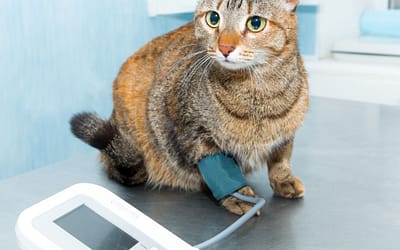Have you felt any swollen lymph nodes on your cat? Has your cat been coughing constantly? Has your cat suddenly started losing weight? Do you think she is having difficulty in breathing? If you answered yes to most of these questions, visit a veterinarian to rule out the possibility of Feline Tuberculosis.
Feline Tuberculosis or Feline TB is a bacterial infection caused by Mycobacterium tuberculosis, and it affects various organs of a cat’s body, including the lungs, lymph nodes, and abdominal organs. Feline TB can be difficult to pinpoint, and treatment usually entails a mix of medicines given over an extended period of time. Even though it is uncommon for cats to transmit TB to people, it is still crucial to take steps to stop the infection from spreading.
Common Symptoms of Feline Tuberculosis
Even though cats occasionally cough to clear their throat or expel hairballs, constant coughing is often a sign of Feline Tuberculosis. If your cat is exhibiting any of the following symptoms, it’s essential to take them to the vet as soon as possible.
- Chronic coughing
- Weight loss
- Lethargy
- Fever
- Difficulty breathing
- Loss of appetite
- Swollen lymph nodes
Coughing can be a symptom of various conditions, including respiratory infections, allergies, asthma, and heart disease. Be on the safer side and get your cat examined by a veterinarian.
Tips to prevent Feline Tuberculosis
Cats have always been best at hiding their pain and discomfort. A cat parent should always stay vigilant to provide a healthy and happy life for their pet cat. Even if your cat isn’t displaying any of the above-mentioned symptoms, you as a cat parent should always make efforts to keep your feline buddy healthy and happy.
Here are some things you can do to protect your cat from Feline Tuberculosis.
Limit the playing area
Not all cats are indoor cats. Some curious paws can go miles chasing the feathers, toys, or a cat friend. Restricting their playing area allows you to sit back and relax knowing that your cat is safe. To keep them safe, make sure they do not come in contact with an unhealthy visitor.
Ensure a balanced diet
A healthy and timely diet is the key to happiness. Make sure that your cat’s meal includes fresh and cooked meat at least once a day. If your cat is hooked on wet food, make sure you choose the right brand. Click here to get the best cat food recommendations for all feline age groups.
Clean their living space regularly
Cats spend most of their time rolling on the floor and sleeping in their favorite corners. If Your cat too has chosen a comfortable space for herself, make sure you clean it regularly to reduce their exposure to bacteria and viruses. Remember to scoop the litter box twice a day. This will help to keep the litter box clean and prevent unpleasant odors from building up. Additionally, you should completely change the litter and clean the litter box every 2-3 weeks.
If you have multiple cats, you may need to install multiple litter boxes far away from each other and clean them more frequently to ensure a clean and hygienic environment for your cats.
Isolate your sick cats
In multiple cat households, cats often infect each other due to regular contact and sharing the same food-water bowls. It’s essential to keep the sick cats isolated from the rest of the group to prevent the spread of infections. Place a litter box and a comfortable bed for your sick cat in a separate room.
Regular medical check-up
The smartest way to ensure your cat’s safety is to make regular vet visits. These check-ups with your trustworthy vet can help catch and prevent potential health problems early, including tuberculosis.
By following the above preventive tips, you can take care of your feline friend and ensure their long-term health and happiness.
According to WHO, the impact of the COVID-19 pandemic has reversed the number of progressive years in reducing the number of deaths caused by TB. Even though it’s not as prevalent in cats as in humans, it’s still a serious condition that requires prompt treatment.
If you suspect your cat may have tuberculosis or is exhibiting any concerning symptoms, it’s essential to take them to the vet as soon as possible for proper diagnosis and treatment. Don’t hesitate to contact your veterinarian if you have any concerns about your cat’s health. Be attentive to taking care of your furry friend!





0 Comments